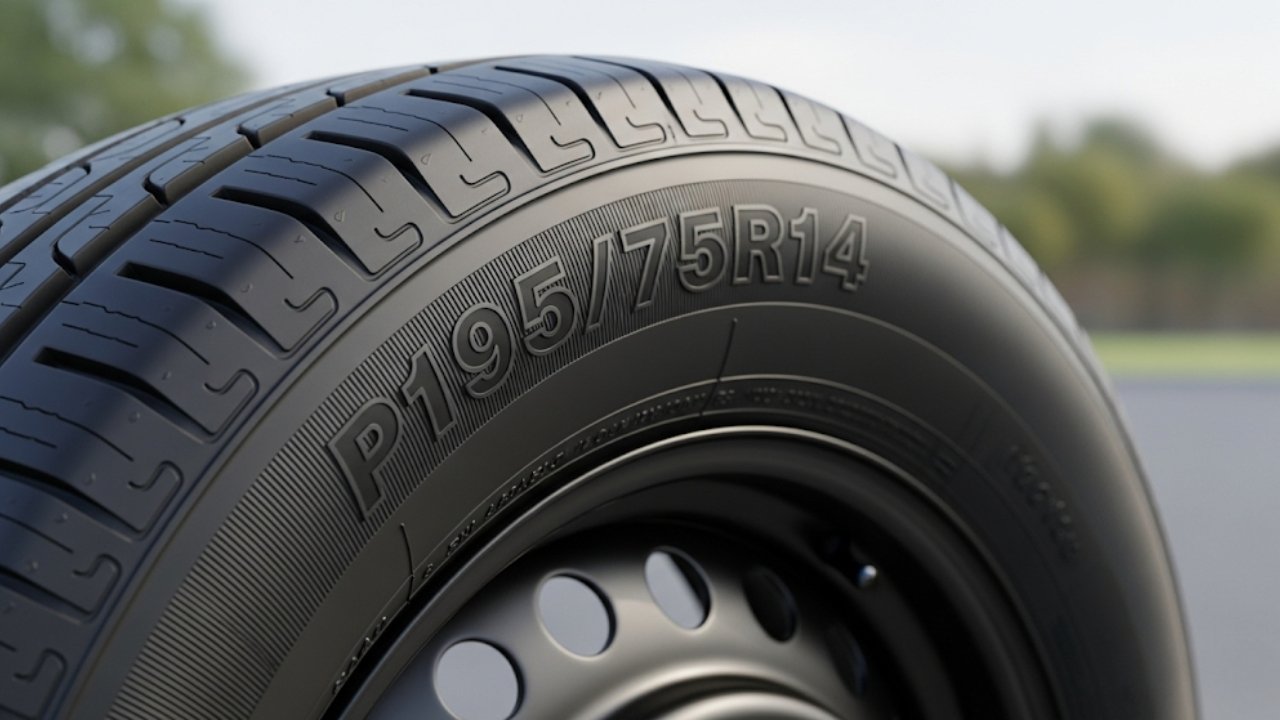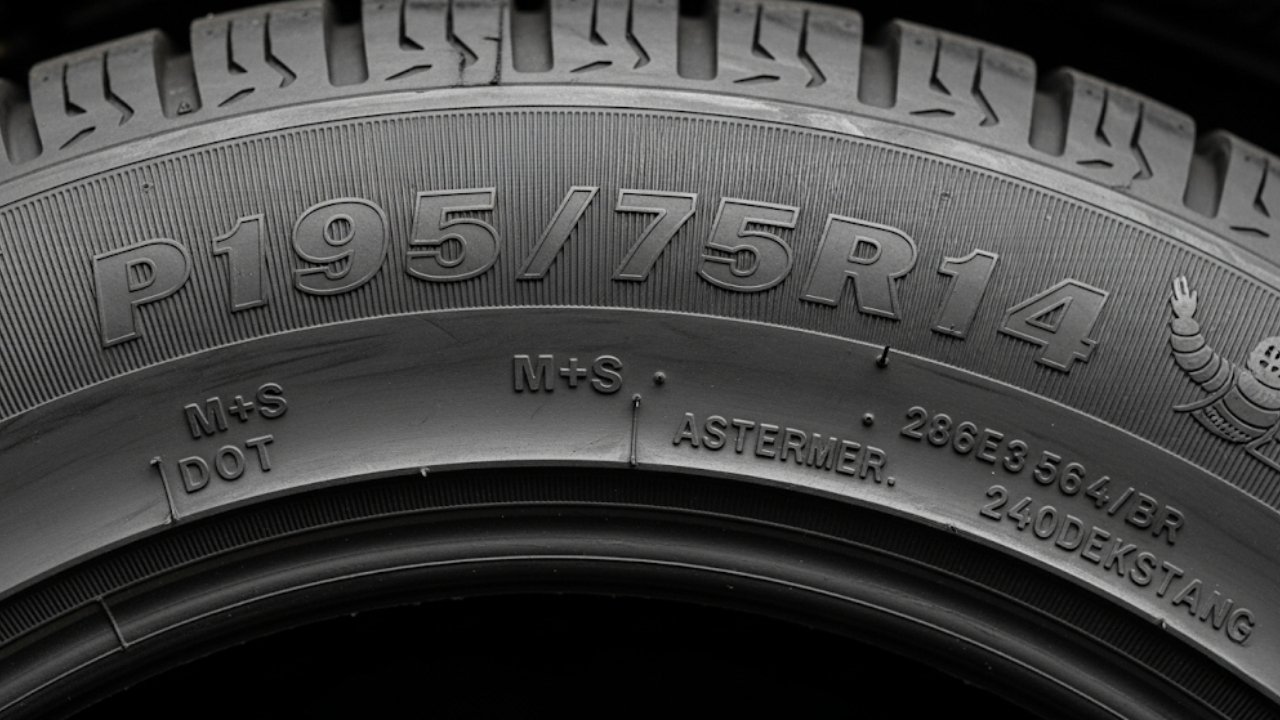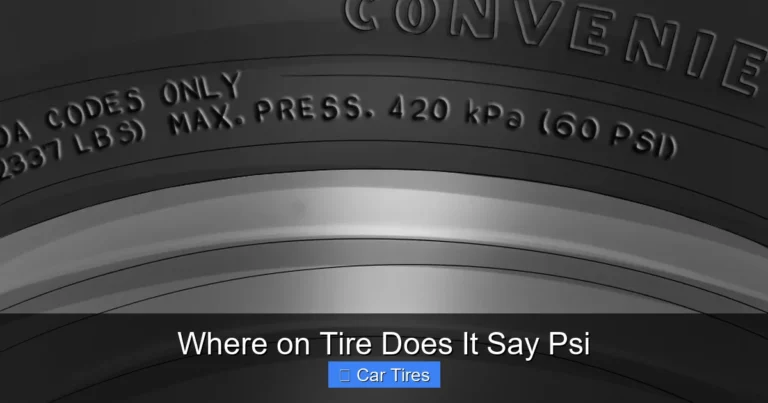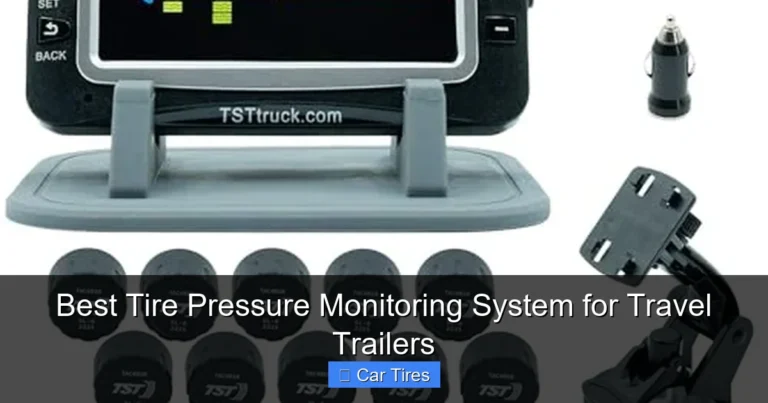What a P195/75R14 Tire Classification Tells You

If you’ve ever looked at your car’s tires and wondered what all those numbers and letters mean, you’re not alone. One code that gets a lot of attention is “P195/75R14.” It may seem confusing, but every part of this code tells a story — about your car, its performance, and the way it hugs the road.
Here’s the cool part: a P195/75R14 tire classification includes both metric and English standard measurements. That’s right — this humble tire sidewall is speaking two different languages at once. It’s a unique blend of European-style metric numbers and American-style inches. And understanding what it means can give you better control over your car, safety, and fuel efficiency.
In this guide, I’ll walk you through each part of the P195/75R14 code in a relaxed, friendly tone — just like we’re chatting over coffee. By the end, you’ll know exactly what your tires are saying, and why it matters to your daily drive.
In This Article
- 1 Cracking the Code: What Does P195/75R14 Actually Mean?
- 2 Why Tire Codes Matter More Than You Think
- 3 Personal Story: The Time I Bought the Wrong Tires
- 4 Let’s Break It Down Further — What Each Part Means
- 5 What Is the “P” in P195/75R14?
- 6 Understanding the Width: 195 Millimeters of Road Contact
- 7 Decoding the Aspect Ratio: Why 75 Matters
- 8 The “R” for Radial: A Game Changer in Tire Tech
- 9 The 14-Inch Mystery: Here’s Where Inches Sneak In
- 10 Quick Recap with Bullet Points: Why This Classification Matters
- 11 How Tire Classification Affects Fuel Efficiency, Ride Quality, and Lifespan
- 12 Choosing the Right Tires: Size Matters, But So Does Driving Style
- 13 Real Talk: Things People Often Overlook About Tires
- 14 FAQs: Your Tire Questions, Answered Clearly
- 14.1 1. Why does a P195/75R14 tire classification include both metric and English measurements?
- 14.2 2. Can I replace P195/75R14 with 205/70R14?
- 14.3 3. What does the 75 mean in this classification?
- 14.4 4. Are P195/75R14 tires good for winter?
- 14.5 5. Do these tires fit all 14-inch wheels?
- 14.6 6. Why do tire codes matter when buying used tires or online?
- 14.7 7. Can I upsize or downsize from this classification?
- 14.8 8. How often should I rotate tires of this size?
- 15 Final Thoughts: Embrace the Hidden Language of Your Tires
Cracking the Code: What Does P195/75R14 Actually Mean?

-
P = Passenger Vehicle
-
195 = Tread width in millimeters
-
75 = Aspect ratio (sidewall height as a % of tread width)
-
R = Radial construction
-
14 = Wheel diameter in inches
What’s unique here is how a P195/75R14 tire classification includes both metric and English standard measurements. The width and aspect ratio (195/75) are given in metric units, while the rim diameter (14) is in inches. It’s a blend of systems — kind of like mixing cups and grams in a cookie recipe. But don’t worry, it all works in harmony!
Why Tire Codes Matter More Than You Think
This isn’t just trivia — these numbers matter for real-world driving. Think of it like shoe sizes. Wearing the wrong shoe might be annoying. Driving on the wrong tire? That could be dangerous.
Here’s what this code tells you about your tire’s personality:
-
Performance – Width and sidewall ratio impact grip and handling.
-
Comfort – Taller sidewalls usually mean a softer, more cushioned ride.
-
Safety – Using the right size helps avoid blowouts and improves braking.
-
Fuel economy – Tire size and construction affect rolling resistance.
And when you realize that a P195/75R14 tire classification includes both metric and English standard measurements, it gives you more flexibility. It lets manufacturers, mechanics, and drivers all speak the same language — even across continents.
Personal Story: The Time I Bought the Wrong Tires
Let me share a quick story. A few years ago, I needed new tires for my old sedan. I saw a great deal online, but I didn’t pay attention to the tire classification. I thought, “Close enough!” and bought 205/70R14s instead of P195/75R14.
They technically fit the rim, but driving felt weird. The speedometer was off. The car leaned too much on turns. It felt like I was floating on balloons.
Turns out, those little numbers carry a lot of weight — literally and figuratively. Tire size isn’t just a suggestion. It’s a key part of how your car is designed to move. That experience taught me to always decode the full tire classification before buying.
Let’s Break It Down Further — What Each Part Means
Here’s a closer look at each part of this code and what it reveals.
| Component | Meaning | Measurement Type |
|---|---|---|
| P | Tire type (Passenger) | Industry Standard (Letter) |
| 195 | Tread width (millimeters) | Metric |
| 75 | Sidewall height (as % of width) | Metric (Ratio) |
| R | Construction type (Radial) | Industry Code |
| 14 | Wheel diameter | English Standard (Inches) |
As you can see, a P195/75R14 tire classification includes both metric and English standard measurements, making it a hybrid — just like how we use both Celsius and Fahrenheit depending on where we are.
What Is the “P” in P195/75R14?
The “P” stands for passenger vehicle, meaning the tire is designed for standard cars, minivans, or small SUVs. It’s important because using a tire meant for a light truck (LT) on a passenger vehicle can mess with the suspension and load capacity.
Think of it like wearing hiking boots to a wedding — wrong tool for the job. The “P” designation is your first clue that this tire fits a personal vehicle and not a commercial truck.
Understanding the Width: 195 Millimeters of Road Contact
The number 195 refers to the tire’s tread width, measured in millimeters from sidewall to sidewall. This tells you how much of the tire touches the road.
A wider tire (like 225 or 245) gives more grip, which helps with cornering and high-speed stability. But it can also reduce fuel economy. Narrower tires offer better mileage but less performance in terms of grip.
So, 195 is a kind of middle ground — balanced between efficiency and traction. That’s why it’s a popular size for sedans and compact cars.
Decoding the Aspect Ratio: Why 75 Matters
Next comes the number 75, which is the aspect ratio. It tells you how tall the sidewall is, as a percentage of the width. So in this case, the sidewall height is 75% of 195mm — about 146mm.
This number is key to ride comfort. Higher ratios (like 75 or 80) mean taller sidewalls, which cushion bumps and absorb road vibrations better. Lower ratios (like 40 or 50) are sportier, but harsher.
So if your daily drive includes potholes and uneven roads, a 75 aspect ratio is like having shock absorbers built into your tires.
The “R” for Radial: A Game Changer in Tire Tech
The “R” stands for radial construction, which is the standard for nearly all modern tires. In a radial tire, the internal layers run perpendicularly across the tire and then wrap around it.
Why does this matter? Because radial tires offer:
-
Better fuel economy
-
Longer tread life
-
Smoother ride
-
More even wear
Before radials became the norm, we used bias-ply tires. Those were stiffer, wore out faster, and didn’t handle as well. The “R” might seem small, but it represents a big leap in technology.
The 14-Inch Mystery: Here’s Where Inches Sneak In
Here’s the twist: after all the metric talk, the last number “14” refers to the wheel diameter in inches. That’s right — this is where the English system comes in.
That’s why we say a P195/75R14 tire classification includes both metric and English standard measurements — because the tire is sized in millimeters, but it fits a wheel measured in inches. Why the mix? History and convenience. Most wheels in the U.S. are sized in inches, and it just stuck.
Quick Recap with Bullet Points: Why This Classification Matters
-
P195/75R14 is not just random — it’s a code with deep meaning.
-
Combines metric (mm) and English (inches) — two systems in one tire.
-
Helps you find the right fit for comfort, safety, and performance.
-
Knowing how to read this code prevents costly mistakes.
-
Offers flexibility and universal understanding across global manufacturers.
How Tire Classification Affects Fuel Efficiency, Ride Quality, and Lifespan
It’s easy to think all tires are more or less the same. But in reality, their classification affects nearly every aspect of your driving experience. The size, shape, and construction of your tires can influence how often you stop at the gas station, how smooth your drive feels, and how long your tires last.
Let’s break that down a bit:
Fuel Efficiency
A P195/75R14 tire classification includes both metric and English standard measurements, which gives it a balanced size. The width (195 mm) offers decent grip without excessive rolling resistance. That means your car doesn’t have to work too hard to move forward — and that translates to better fuel economy.
Narrower tires often perform better in this department. But with a 195 width, you’re not sacrificing traction just to save pennies at the pump. It’s a happy medium.
Ride Quality
A 75 aspect ratio gives this tire a taller sidewall. That translates into more shock absorption. If you’ve ever hit a pothole and winced, you’ll appreciate this cushion. Taller sidewalls flex more, softening the impact of cracks, curbs, and rough roads.
Your daily commute just got more comfortable — and your coffee less likely to spill.
⏳ Tire Lifespan
Thanks to radial construction (indicated by “R”), these tires wear more evenly. Combined with a moderate tread width and sidewall height, it all contributes to longer-lasting performance. These aren’t ultra-low-profile tires built for racing; they’re designed for endurance and dependability.
So, if you want tires that will stick with you through rain, heat, and everything in between — P195/75R14 is a reliable choice.
Choosing the Right Tires: Size Matters, But So Does Driving Style
Knowing your tire size is one thing. But choosing the right tires also depends on how you drive, where you live, and what kind of car you own.
Here’s a quick table comparing when P195/75R14 tires are ideal — and when you might need something different:
| Driving Style | P195/75R14 Suitability | Why It Works or Doesn’t |
|---|---|---|
| City Driving | ✅ Excellent | Smooth roads, balanced fuel economy and grip |
| Highway Cruising | ✅ Great | Comfortable ride and stable at speed |
| Mountain Terrain | ⚠️ Fair | Might want wider tires for extra grip |
| Performance Driving | ❌ Not Ideal | Too soft and tall for tight handling |
| Off-Roading | ❌ Avoid | Designed for pavement, not dirt or mud |
So yes, a P195/75R14 tire classification includes both metric and English standard measurements, but it also offers a sweet spot for everyday driving. Think city errands, long commutes, weekend road trips — that’s where this tire shines.
Real Talk: Things People Often Overlook About Tires
Let’s take a moment to talk about the stuff no one tells you:
-
Mixing tire sizes is a common mistake. Don’t put a P195/75R14 on the front and a 205/65R14 on the back unless a pro recommends it. Your car was designed with balance in mind.
-
Used tires might have the right size, but check the age. Rubber degrades, even if tread looks fine. Look for the DOT code — tires older than six years should be replaced.
-
Tire pressure matters. Even the perfect classification can’t perform well if you’re underinflated. Always check the PSI recommended in your car’s manual — not what’s on the tire itself.
-
Load ratings and speed ratings are just as important. They’re usually found right after the size (like 89S or 92T). Don’t overlook them.
These are the real-world details that help your tires — and your car — perform at their best.
FAQs: Your Tire Questions, Answered Clearly
1. Why does a P195/75R14 tire classification include both metric and English measurements?
Great question! It’s a blend that evolved over time. Tread width and aspect ratio are measured in millimeters (metric), while wheel diameter remains in inches (English). It’s a standardized way to help both global manufacturers and local shops communicate effectively.
2. Can I replace P195/75R14 with 205/70R14?
Technically, yes — but be cautious. While the difference is small, the larger width and slightly shorter sidewall can affect speedometer accuracy and handling. Always check with a tire expert or use a tire calculator to compare rolling diameter.
3. What does the 75 mean in this classification?
The “75” is the aspect ratio — the sidewall height as a percentage of the tire’s width. So, the sidewall height is 75% of 195 mm, which is roughly 146 mm.
4. Are P195/75R14 tires good for winter?
It depends on the tread pattern and rubber compound. If it’s a dedicated winter tire with that classification, then yes! But don’t assume all tires of this size are snow-ready. Look for the snowflake symbol on the sidewall.
5. Do these tires fit all 14-inch wheels?
No. Wheel width and offset also matter. Most 14-inch wheels will work, but always double-check the rim width range (usually 5.0–6.5 inches for this tire size).
6. Why do tire codes matter when buying used tires or online?
Because even a slight mismatch in size or rating can affect safety and handling. Knowing what P195/75R14 really means helps you buy smarter and drive safer.
7. Can I upsize or downsize from this classification?
Yes, but you need to keep the overall diameter within 3% of your original spec. Going too big or small can throw off your car’s computer, ABS, and speedometer.
8. How often should I rotate tires of this size?
Every 5,000 to 7,500 miles is ideal. Rotating tires helps ensure even wear and extends their lifespan — regardless of size.
Final Thoughts: Embrace the Hidden Language of Your Tires
At the end of the day, your tires do more than carry your car — they carry your safety, your comfort, and your peace of mind. And now you know that a P195/75R14 tire classification includes both metric and English standard measurements, you can appreciate how thoughtfully they’re designed.
Understanding this code is like decoding a secret message written on the rubber of your car. It’s practical, yes, but also kind of poetic — a mix of precision, purpose, and global standards coming together in a perfect circle.
So next time you see someone scratching their head at a tire size, share what you’ve learned. Who knows? You might just save their ride.






